Selected research and design publications by Stephen Verderber
Books
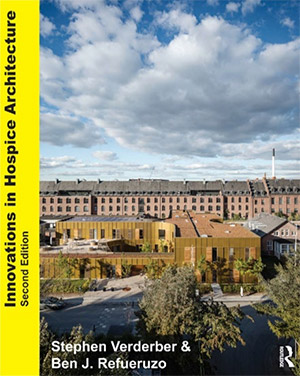
Innovations in Hospice Architecture
Second Edition, London and New York: Routledge, 2019, 358 pp.
A critical examination of the theory and history of residential hospices — and the end-of-life care movement’s rejection of the institutionalism of the modern megahospital. Chapters address the history and development of hospice in Western society, palliative care/built form interventions, a compendium of site planning and design considerations, and 36 architectural case studies. Hospice architecture worldwide has been influenced by the first edition of this book. With Ben Refuerzo (University of California at Los Angeles), Second Author.
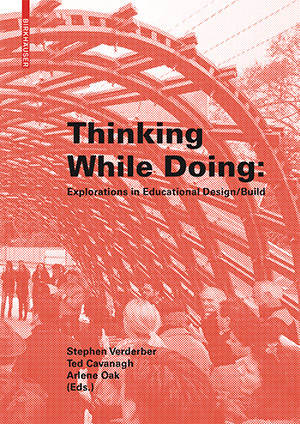
Thinking While Doing: Explorations in Educational Design/Build
Berlin: Birkhauser, 2019, 380 pp. Co-Editor (Lead), with Ted Cavanagh (Dalhousie University) and Arlene Oak (University of Alberta).
Documents an unprecedented educational design-build initiative in advanced gridshell design, funded by the largest grant to date in this curricular area of architectural education ($2.4M CAN). It was an interdisciplinary joint American-Canadian effort, linking seven universities with the aim of expanding the evidence-based discourse in e-d/b curricula globally. Historical, pedagogical, ethical, philosophical, socio-cultural, ecological, and tectonic dimensions of design/build are examined with the student learning experience at the centre of the equation.
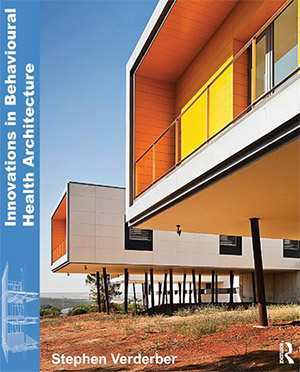
Innovations in Behavioural Health Architecture
London and New York: Routledge, 2018, 435 pp.
The fourth title in the Innovations in Healthcare Architecture series. This book explores past, present, and anticipated international trends in psychiatric inpatient and outpatient treatment environments. The widespread unmet need for mental health treatment is examined in developing and developed countries, and fundamental ways architects and allied designers can rectify this growing crisis. Historical developments since 1965 are examined, including 25 case studies, accompanied by a compendium of planning and design considerations.

Innovations in Transportable Healthcare Architecture
London and New York: Routledge, 2016, 347 pp.
The first book to examine the role and function of offsite-built architecture in the health care milieu. Chapters focus on the history of transportable buildings, the history and current status of prefabrication in architecture, design considerations, and case studies of prefab componentry, built projects, and speculative prototypes for everyday applications. A case is made for the architect to more proactively assume the role of first responder in post-disaster contexts.
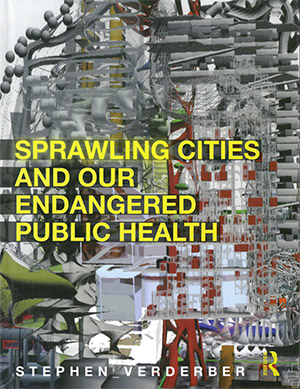
Sprawling Cities and Our Endangered Public Health
London and New York: Routledge, 2012, 231 pp.
Examines the past and present role of architecture in relation to the public health consequences of suburban sprawl — redefined as sprawl machines — and the ways in which unmitigated sprawl threatens our public and psychological health. Topics addressed include 20th century sprawl-promoting theories of architecture and urbanism, their public health consequences, evidence-based design considerations for salutogenic, health-promoting built environments, and prognostications.
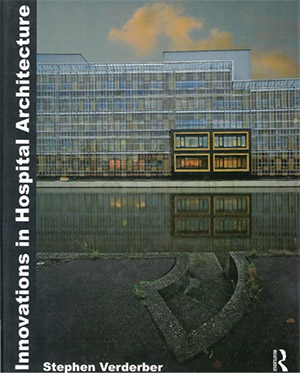
Innovations in Hospital Architecture
London and New York: Routledge, 2010, 375 pp.
A global review of advancements since 2000 in sustainable hospital architecture, viewed from the perspective of climate change and the increasingly important therapeutic role of the built environment in global health and well-being. Chapters address historical precursors, landscape affordances, historic preservation, site planning, and architectural design considerations, including 28 case studies. In many respects, the sequel to the 2000 Yale Press book (below).

Delirious New Orleans: Manifesto for an Extraordinary American City
Austin: University of Texas Press, 2009, 252 pp.
A poignant photo essay and personal reflection of one of America’s most distinctive, culturally important cities. A series of essays capture New Orleans’ offbeat, idiosyncratically vibrant culture, and compare/contrast before and after the devastating impact of Hurricane Katrina in 2005. A strong case is made for the virtues of authenticity, place making, and the preservation of pre-modern and modernist landmarks. Abbott Lowell Cummings National Book Award: The Vernacular Architecture Forum, 2010.
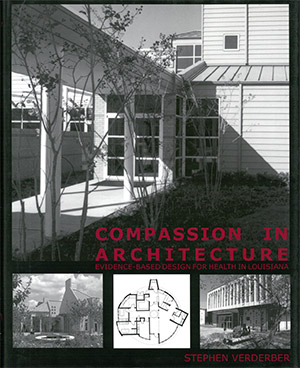
Compassion in Architecture: Evidence-based Design for Health
Lafayette: Center for Louisiana Studies, 2005, 336 pp.
A critical examination of the plight of the medically underserved in America through the lens of architecture, with design intervention as a vehicle for positive social change. Grassroots case studies — centred on outpatient community health centres — are documented by means of evidence-based direct engagement with key stakeholders, and the application of a compendium of planning and design considerations. Places Magazine Award, 2006.

Healthcare Architecture in an Era of Radical Transformation
New Haven and London: Yale University Press, 2000, 414 pp.
Award-winning critical narrative of the history and theory of health care architecture in the last third of the 20th century. Ideology, technology, politics, and public policy are examined. Chapters on landmark post-WWII hospitals, specialized care settings for mental health, the aged, youth, outpatient care settings, and utopian/dystopian visions illustrate the inseparability of architecture from its societal milieu (with David Fine, Second Author). ACSA National Research Award, 2002.
Peer-reviewed research
Design and health — general
1.1 “Territories of Engagement in the Design of Eco-Humanist Healthcare Environments,” Health Environments Research & Design Journal, 10:2, 2017, pp. 104-123 (with Terri Peters). [PDF]
1.2 “On the Planning and Design of Hospital Circulation Zones: A Review of the Evidence-based Literature,” Health Environments Research & Design Journal, 10:2, 2017, pp. 124-146 (with Shan Jiang). [PDF]
1.3 “Landscape Therapeutics and the Design of Salutogenic Hospitals: Recent Research,” World Health Design, 8:1, 2016, pp. 38-49 (with Shan Jiang). [PDF]
1.4 “Comparing Canadian and American Shopping Malls: Lessons for Health-Promoting Sprawl Mitigation,” World Health Design, 7:7, 2014, pp. 58-63. [PDF]
1.5 “The Evolving Role of Evidence-based Research in Healthcare Facility Design Competitions,” Frontiers of Architectural Research (China), 3:3, 2014, pp. 238-249 (with Shan Jiang, George Hughes and Yanwen Xiao). [PDF]
1.6 “Residential Hospice Environments: Evidence-based Architectural and Landscape Design Considerations,” Journal of Palliative Care, 30:2, 2014, pp. 69-82. [PDF]
1.7 “Community Health Centers for the Medically Underserved: An American Case Study.” Urbanism + Architecture, 6:115, 2013, pp. 6-15 (Published in Chinese and English). [PDF]
1.8 “Rebuilding a Statewide Network of Community Health Centers for the Medically Underserved: A Longitudinal Assessment,” Journal of Public Health Management and Practice, 19:5, 2013, Online, pp. E10-E22 (Cabrenia Thomas, Second Author). [PDF]
1.9 “Person-Nature Therapeutics in Crisis Shelters for Victims of Domestic Violence: A Review,” In Wells, J. and Pavildes, E. (eds.) Healthy + Healing Places. Proceedings of the 44th Environmental Design Research Association Annual Conference, 2013, pp. 97-104 (with Victoria Lygum, Ulrika K. Stigsdotter, and Shan Jiang). [PDF]
1.10 “Ten Current Trends in American Healthcare Architecture,” Urbanism + Architecture (U+A), 5:92, 2012, pp. 66-74 (published in Chinese and English). [PDF]
1.11 “Reconsidering the Semi-Private Inpatient Room in U.S. Hospitals,” Health Environments Research & Design Journal, 5:2, Winter 2012, pp. 7-23 (Lindsay Todd, Second Author). [PDF]
1.12 “A Hospice for the 21st Century.” Urbanism + Architecture (U+A), 46:7, 2008, pp. 28-30 (Published in Chinese). [PDF]
1.13 “Hospital Futures—Humanism Versus the Machine.” In Aaron Betsky and Cor Wagenaar (eds.), The Architecture of Hospitals. Rotterdam: The Institute of Architecture/NAI Publishers, 2006, pp. 77-86 (Book Chapter). [PDF]
1.14a “Architecture for Health—2050: An International Perspective (The Case of Poland).” Architecture & Biznis, 12:49, December 2004, pp. 30-35 (Published in Polish).
1.14b “Community Care Clinics: Report from USA.” Architecture & Biznis, 12:49, December 2004, pp. 54- 55 (Recent R-2ARCH work, Published in Polish). [PDF]
1.15 “Architecture for Health—2050: An International Perspective.” The Journal of Architecture (UK), 8:3, 2003, pp. 281-302. Article Reprinted in Japanese Government Ministry of Health Report, Global Hospitals in the Year 2050, Tokyo, 2004 (Published in English and Japanese). [PDF]
1.16 “The Role of the Architectural Environment in Community Health: An Evidence-based Initiative.” Journal of Public Health Management and Practice, 11:1, 2005, pp. 79-89 (Joseph Kimbrell, Second Author). [PDF]
1.17 “Research-based Architecture and the Community Healthcare Consumer: A Statewide Initiative.” Journal of Architectural and Planning Research, 20:1, 2003, pp. 57-67. [PDF]
1.18 “On the Construction of Research-Based Design: A Community Health Center”, Journal of Architectural and Planning Research, 16: 3, 1999, pp. 225-241. [PDF]
1.19 "In Support of a New Life: A Shelter for Victims of Domestic Violence.” Journal of Architectural and Planning Research, 10:1, 1993, pp. 40-58 (Ben Refuerzo, Second Author). [PDF]
1.20 "Dimensions of Person-Environment Relationships in Shelters for Victims of Domestic Violence." Journal of Architectural and Planning Research, 7:1, 1990, pp. 33-52 (Ben Refuerzo, Second Author). [PDF]
1.21 "Effects of Personal Status and Patterns of Use on Residential Satisfaction in Shelters for Victims of Domestic Violence." Environment and Behavior, 21:4, 1989, pp. 413-434 (Ben Refuerzo, Second Author). [PDF]
1.22 "Windows, Views, and Health Status in Hospital Therapeutic Environments." Journal of Architectural and Planning Research, 4:1, 1987, pp. 121-133 and Editor's Errata, 5:1, 1988, pp. 89- 90 (David Reuman, Second Author). [PDF]
1.23 "Dimensions of Person-Window Transactions in the Hospital Environment." Environment and Behavior, 18:4, 1986, pp. 450-466. [PDF]
Design and health — environment and aging
2.1 “Integrating LEED with Biophilic Design Attributes — Toward an Inclusive Rating System,” pp. 311-327 in D. Battisto and J.J. Wilhelm, eds., Architecture and Health: Guiding Principles for Practice. London and New York: Routledge, 2019 (with Terri Peters). [PDF]
2.2 “Preventing Chronic Disease Among the Aged: A Call for Evidence-based Design Research,” Health Environments Research & Design Journal, 2:3, Spring 2009, pp. 71-83. [PDF]
2.3 “The Role of Housing in Community Health Promotion Among the Aged: A Case Study in New Orleans.” Journal of Housing for the Elderly, 20:4, 2006, pp. 123-141. [PDF]
2.4 “Environment and Aging in Japan: A Review of Recent Research.” Environment and Behavior, 37:1, 2005, pp. 43-80, (Jeung-Haeng “Masa” Song, Second Author). [PDF]
2.5 "Patterns of Room Personalization Among the Elderly in the Residential Environment." In A. Seidel (ed.), Proceedings of EDRA 25, San Antonio. Washington, D.C.: Environmental Design Research Association, 1994, pp. 113-125. [PDF]
2.6 "Elderly Persons' Appraisal of Domestic Animals in the Residential Environment." Anthrozoos, 4:3, 1991, pp. 164-173. [PDF]
Design and health — disaster responsiveness and vernacular environments
3.1 “Architects as First Responders: Portable Healthcare Architecture in a Climate-Altered World,” Architectural Design (AD), 87:2, 2017, pp. 101-107. [PDF]
3.2 “Learning from Commercial Vernacular Building Types: A North American Case Study,” International Journal of Architectural Research (Archnet-IJAR), 10:2, 2015, pp. 22-37. [PDF]
3.3 “Zombie Housing for the Displaced in the Aftermath of Disaster,” In Arijit Sen and Jennifer Johung (eds.), Landscapes of Mobility: Culture, Politics and Placemaking. Surrey, UK: Ashgate, 2013, pp. 47-72 (Book Chapter). [PDF]
3.4 “Rapid Response Architecture: Redeployable Trama Centers for Post-disaster Response,” World Health Design, October, 2012, pp. 56-61. [PDF]
3.5 “LEED and the Design/Build Experience: A Shelter for Homeless Families Returning to Post-Katrina New Orleans,” International Journal of Architectural Research (Archnet-IJAR), 5:1, 2011, pp. 55-72 (with B. Glazer and R. Dionisio). [PDF]
3.6 “Five Years After—Three New Orleans Neighborhoods,” Journal of Architectural Education, 64:1, 2010, pp. 107-120. [PDF]
3.7 “The Un-building of Historic Neighborhoods in Post-Katrina New Orleans,” Journal of Urban Design, 14:3, 2009, pp. 257-277. [PDF]
3.8 “Evidence-based Design for Healthcare in Post-Katrina New Orleans: Current Dilemmas,” Health Environments Research & Design Journal, 1:2, Winter 2008, pp. 71-79. [PDF]
3.9 “Emergency Housing in the Aftermath of Hurricane Katrina: An Assessment of the FEMA Travel Trailer Program,” Journal of Housing and the Built Environment, 23:4, 2008, pp. 367-381. [PDF]
Design and health — architectural education
4.1 “Exploring Healthcare Architecture Through the Medium of Film: Motives and Techniques,” International Journal of Architectural Research (Archnet-IJAR), 8:1, March 2014, pp. 29-49. [PDF]
4.2 “On the Value of Environmental Stewardship and Sustainability in Health Administration Education,” Journal of Health Administration Education, 26:3, 2008, pp. 248-268 (with J. Fauerbach and B.Walter). [PDF]
4.3 “Interdisciplinism, Competency, and the Thesis Experience.” In Finishing School. Proceedings of the 2003 ACSA Southeast Region Conference, University of South Florida, Tampa (CD-ROM of proceedings, 2004), pp. 23-31. Feature article, ArchVoices, 02.04.05, available at http://www.archvoices.org [PDF]
4.4 “Compassionism and the Design Studio in the Aftermath of 9/11.” Journal of Architectural Education, 56:3, 2003, pp. 48-62. [PDF]
4.5 “On the Value of Architecture and Facility Management in Health Administration Education,” Journal of Health Administration Education, 20:1, 2002, pp. 39-60. [PDF]

